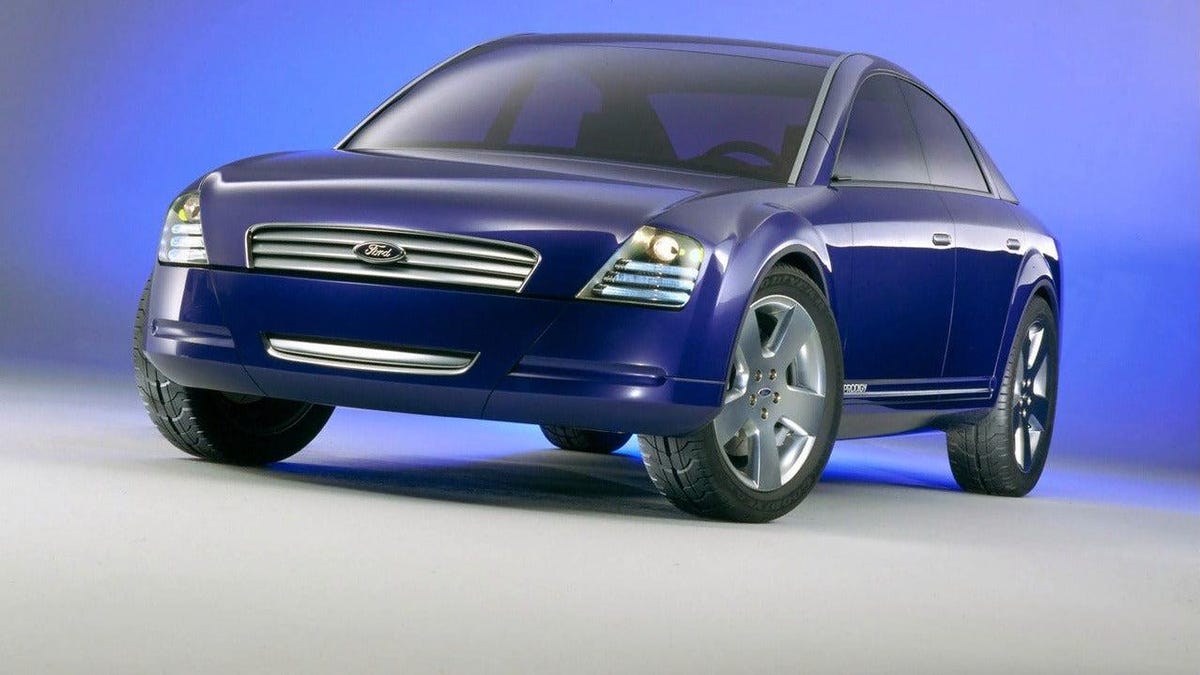Ford Was Ahead Of The Curve With The Prodigy Concept

Image: Ford
The turn of the century was all about new beginnings. Vehicle technology was on the verge of changing. Many automakers, as usual, wanted to be at the forefront of this change. As a result, there were a lot of impressive concept cars around this time. Most of the tech or showy things shown on these concept cars either appeared years later or resulted in something so different from what was originally shown. Some great concepts never saw the light of day, like the Ford Prodigy.
Image: Ford
The Prodigy made its debut at the 2000 NAIAS (North American International Auto Show). The car was part of a partnership between the Big Three to develop a new generation of fuel-efficient vehicles for American drivers. Called “The Partnership for a New Generation of Vehicles,” the goal was to bring a vehicle to market by 2003 that got an average of 80 mpg. A hell of a goal 20+ years ago.
Daimler Chrysler ESX3 conceptImage: Stellantis Media Archives
All this would be achieved with a family sedan manufactured with everything from fuel-efficient engines, to lightweight vehicle materials. GM produced their 80 mpg General Motors Precept concept, Chrysler had its 72 mpg ESX3 and Ford did the Prodigy.
Ford was quick to tout the fact that the Prodigy was rated for 70 MPG. Using a hybrid diesel powertrain developed under a project called P2000, the end goal was the possibility of bringing a fuel-efficient family sedan to the market.
Image: Ford
Everything about the car was designed for maximum fuel efficiency. The body made extensive use of aluminum to save weight. It had a Miata-like curb weight of 2,387 pounds. It also had a super low drag coefficient of 0.199. The centerpiece though was the hybrid diesel engine. It was a fuel miser. At 1.2-liters it produced only 74 horsepower. An additional 46 HP came from its electric motor with a total combined output of 120 HP. Ford said performance rivaled the Mondeo at the time. And if you’re wondering, trust me, it’s no sports sedan.
Image: Ford
Inside, the design was clean, efficient, and period futuristic. Instead of side mirrors, the exterior of the car was fitted with small cameras that connected to two small screens inside the vehicle. These screens provided a feed for the outside of the vehicle. This was done in the name of efficiency to reduce drag.
Of course, all of this, Ford’s engine project, the government-backed partnership, etc. were for nothing. The U.S. and world never actually saw this concept make it to production, nor any of its features. While the partnership between the companies resulted in new technological breakthroughs, the most the buying public got from this concept was design inspiration. The Prodigy was a preview of the era of Ford’s Gillette grill phase which went on everything from the F-150 to the Edge. The design of the rear of the car and its high trunk is similar to the Ford 500/Mercury Montego twins. Even the steering wheel design ended up in most Ford vehicles in the 2000s.
What should have come through from this concept though, was the diesel hybrid. Had the engine come to market, Ford would have beat the other American automakers to market with a mass-produced hybrid. But the buying public wouldn’t see a hybrid from Ford until 2005, with the introduction of the Escape Hybrid, which was both the first hybrid from an American automaker and the first hybrid SUV. It’s too bad, though. The dual frugality of both a hybrid and a diesel would have been an automotive game-changer.



